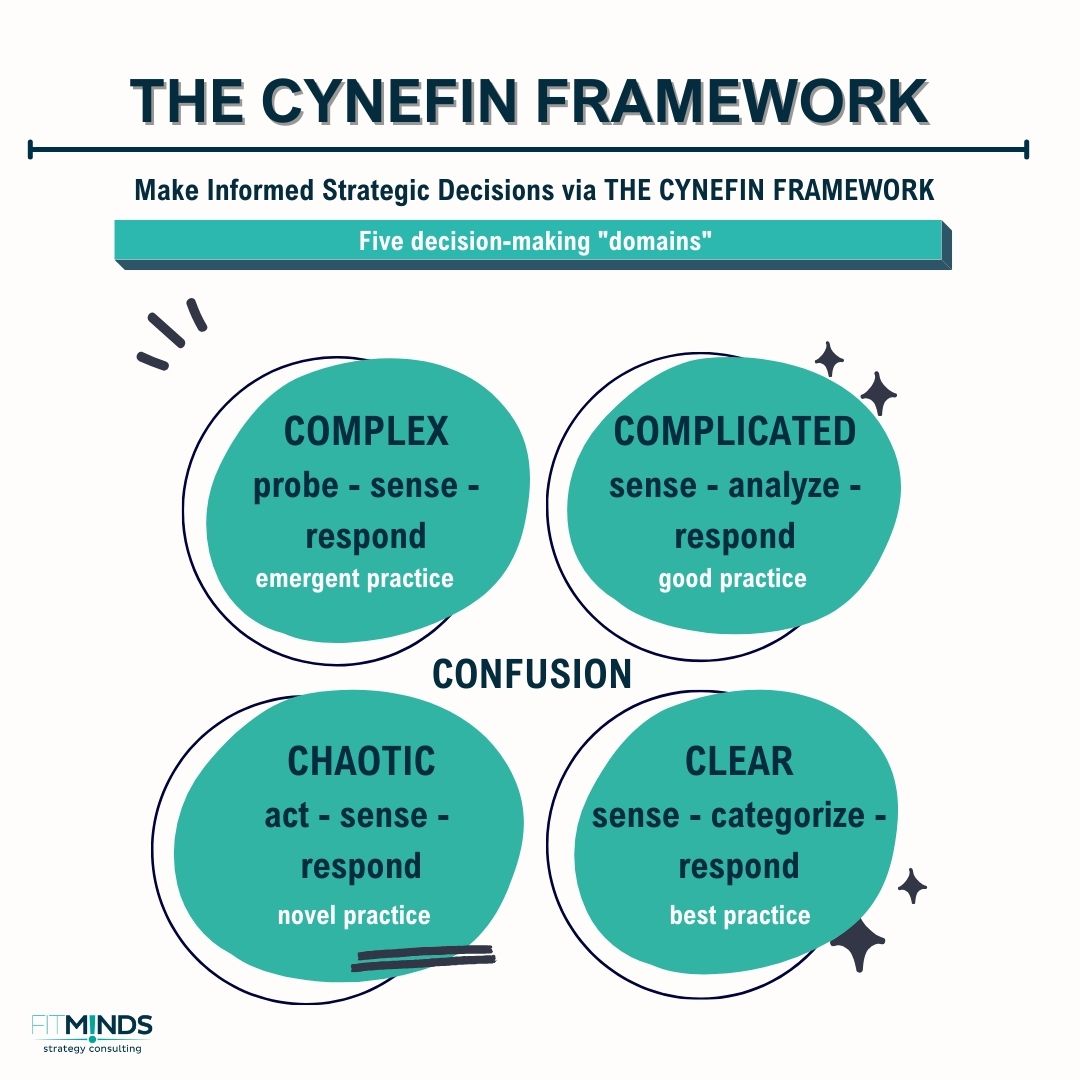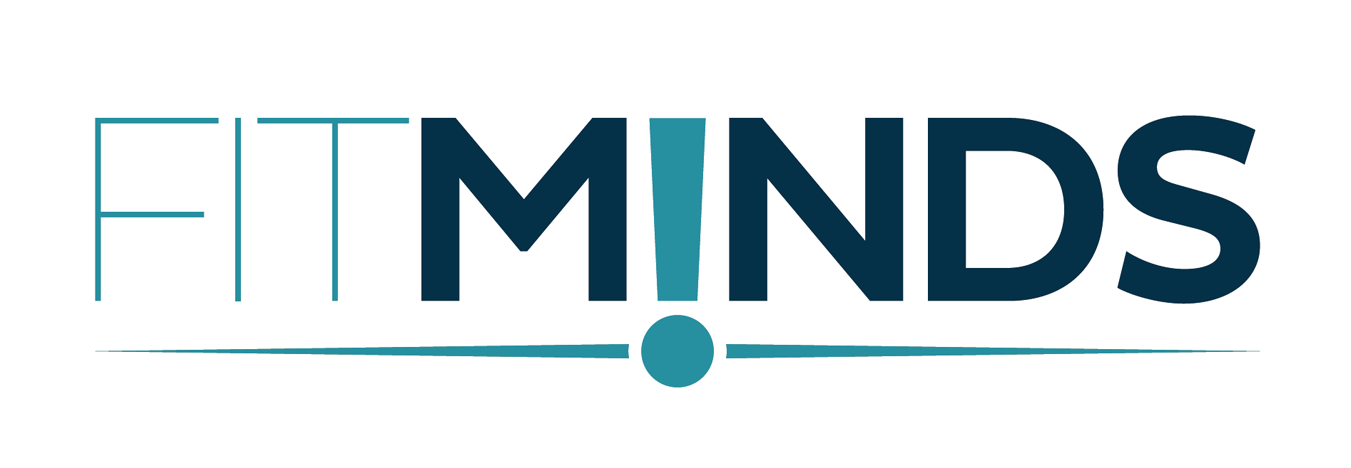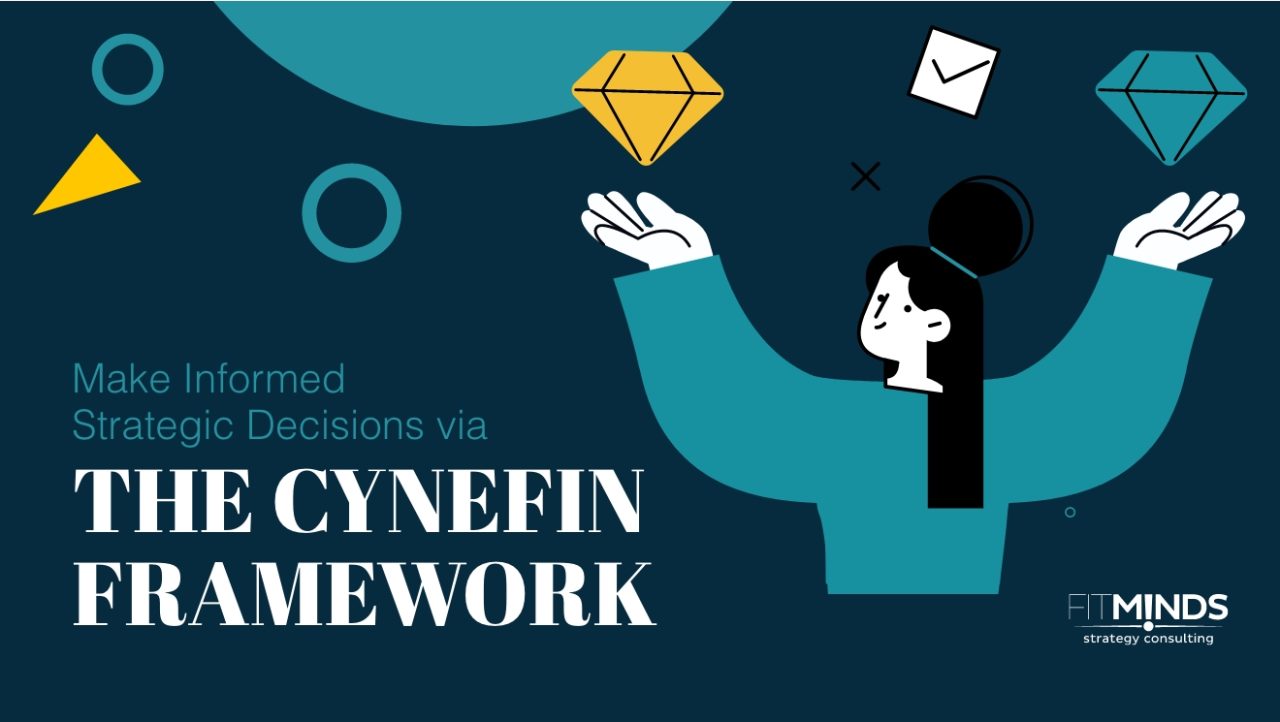The Cynefin Framework, created by Dave Snowden in 1999, is a conceptual tool designed for decision-making in complex and uncertain environments. It provides a sense-making model that helps leaders identify and respond to different types of problems by categorizing them into distinct domains.
Main Benefits of The Cynefin Framework
Understanding and applying The Cynefin Framework enables more effective management strategies by aligning responses with the nature of the problem.
The Cynefin Framework helps you:
- to develop more effective and informed decision-making processes by categorizing problems into different areas,
- to improve problem-solving skills and develop specific problem-solving approaches,
- to implement risk management strategies that are suited to the specific context,
- to adapt quickly to changing circumstances, ensuring resilience in the face of complexity and uncertainty.
Explanation of The Cynefin Framework
The Cynefin Framework categorizes issues into five distinct domains, each requiring different management and decision-making approaches. These five decision-making contexts, or “domains” are: clear, complicated, complex, chaotic, and a center of confusion.
Clear (formerly Simple):
The clear domain represents the “known knowns” where established rules or best practices apply. In this context, the cause-and-effect relationship is clear, and the situation is stable: if you do X, you can expect Y. In such scenarios, the recommended approach is to “sense-categorize-respond”: first, establish the facts (sense), then categorize the issue, and finally respond by following the rule or applying best practice.
Complicated:
The complicated domain encompasses the “known unknowns,” where the relationship between cause and effect requires analysis or expertise. In this domain, there are multiple right answers, but identifying them necessitates a thorough assessment and expert judgment. The framework recommends a “sense-analyze-respond” approach: first, assess the facts (sense), then analyze the situation, and finally apply the appropriate good practice.
Complex:
The complex domain encompasses the “unknown unknowns,” where cause-and-effect relationships can only be identified in retrospect and there are no definitive right answers. In this dynamic environment, numerous interacting elements create unpredictable outcomes. Following a “probe-sense-respond” approach, leaders should probe the situation, sense emerging patterns, and respond accordingly.
Chaotic:
The chaotic domain is characterized by a lack of clear cause-and-effect relationships, creating a highly unstable environment that demands immediate action. In such situations, the recommended approach is to “act-sense-respond”: act quickly to establish order, sense where stability can be found, and then respond to transform chaos into complexity.
Confusion:
The confusion domain, situated at the center of the Cynefin Framework, represents scenarios where it is unclear which of the other domains apply. Previously referred to as disordered, this domain is characterized by a lack of clarity and coherence. The recommended approach is to break down the situation and classify parts of it into one of the other domains.

The Cynefin Framework aids leaders in navigating complexity by categorizing problems into distinct domains and applying tailored management strategies. By continuously assessing and adapting their approaches, organizations can effectively manage uncertainty and enhance their resilience. Ultimately, this structured methodology leads to improved problem-solving and better outcomes.
How to Apply The Cynefin Framework
To apply The Cynefin Framework to your business, FITMINDS is providing an adoption of the model that fits your company and your company’s needs. By using The Cynefin Framework, organizations can improve problem-solving skills and develop specific problem-solving approaches.
Contact us to get more information or discover your probable personalized roadmap for The Cynefin Framework.
Additional Tips and Readings
- You can learn more about management strategies with The Baldrige Model
- To read more about business strategy, you can check the Competitive Landscape Analysis.
- You can read Capability Maturity Model Integration (CMMI) to optimize development processes.
- You can learn more about development processes with the Delta Model.
Contact us to make strategic decisions via The Cynefin Framework.



13 comments
Pingback: kamagra livraison bon marché
Pingback: get enclomiphene buy online no prescription
Pingback: buy androxal generic name
Pingback: how to order dutasteride medication interactions
Pingback: flexeril cyclobenzaprine online saturday delivery
Pingback: order fildena generic buy online
Pingback: gabapentin online perscriptions with no membership
Pingback: can you get itraconazole over the counter
Pingback: get staxyn generic pharmacy online
Pingback: get avodart purchase online from canada
Pingback: buy cheap rifaximin australia purchase
Pingback: buy cheap xifaxan buy sydney
Pingback: levné kamagra na prodej bez nutnosti lékařského předpisu
Comments are closed.